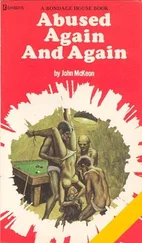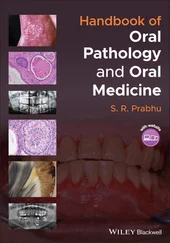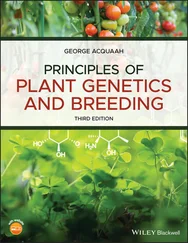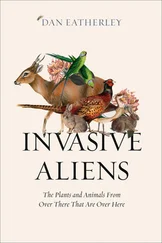2 Chapter 2 Figure 2.1 Symbiotic relationships: + positive effects on partner; − n... Figure 2.2 Faba bean leaves infected by Botrytis fabae ( left ) showing necrot... Figure 2.3 Apple scab disease caused by Venturia inaequalis . ( Left ) Scab les... Figure 2.4 Nutritional modes in heterotrophic microorganisms. Figure 2.5 Use of Koch’s postulates to establish the etiology of a new disea... Figure 2.6 Relationships between host, pathogen, and disease reaction. Figure 2.7 The quadratic check, showing interactions between alleles of a ho...
3 Chapter 3 Figure 3.1 (a) Intercellular hypha (IH) of the oomycete Peronospora viciae i... Figure 3.2 Mycelial strands formed by a basidiomycete fungus. The fungus has... Figure 3.3 Specialized parasitic structures, known as haustoria, formed by t... Figure 3.4 Bacterial cell structure. (a) Electron micrograph of the bacteriu... Figure 3.5 Structure of tobacco mosaic virus (TMV). (a) Electron micrograph ... Figure 3.6 Viroid structures, showing (a) rod‐like secondary structure with ... Figure 3.7 The processes involved in pathogen dispersal and the scale on whi... Figure 3.8 Some routes by which pathogens are dispersed. Figure 3.9 Active discharge of ascospores of Sclerotinia sclerotiorum from s... Figure 3.10 Dispersal of spores or bacterial cells by rain drops from wet an... Figure 3.11 Vectors exploited by plant pathogens. Figure 3.12 The disease tetrahedron. Figure 3.13 Different routes of plant viruses in their aphid vectors. The gu...Figure 3.14 Survival strategies adopted by plant pathogens.Figure 3.15 Electron micrograph sections of (a) a multicellular conidium of Figure 3.16 Survival and germination of fungal sclerotia under natural condi...Figure 3.17 Daily changes in populations of Pseudomonas syringae on bean lea...Figure 3.18 Survival periods recorded for some pathogens in the field.
4 Chapter 4Figure 4.1 Activities involved in disease assessment and prediction.Figure 4.2 Serology‐based pathogen detection. (a) A sandwich ELISA assay. 1....Figure 4.3 Coconut lethal yellowing disease (LYD) caused by a phytoplasma. (...Figure 4.4 Next‐generation sequencing (NGS) workflow based on RNA‐seq ...Figure 4.5 Septoria tritici leaf blotch in England and Wales. (a) Risk map b...Figure 4.6 Distribution of Asian soybean rust ( Phakopsora pachyrhizi ) in the...Figure 4.7 Assessment of Septoria tritici leaf blotch of wheat ( Zymoseptoria ...Figure 4.8 Sensor technologies used for automated detection and evaluation o...Figure 4.9 Aerial photo of a winter wheat crop in the UK in June, showing di...Figure 4.10 Imaging plant health. (a) Octocopter drone carrying sensors. (b)...Figure 4.11 Some examples of equipment used to monitor the risk of disease. ...Figure 4.12 Numbers of three aphid species ( Metopolophium dirhodum , Rhopalos ...Figure 4.13 Contribution of the upper leaves and ear to final yield of wheat...Figure 4.14 Effects of brown rust ( Puccinia triticina ) of cereals. (a) Wheat...Figure 4.15 Relationship between late blight progress and yield loss of the ...Figure 4.16 Fungal pathogens that can contaminate cereal grain. (a) Ergot on...Figure 4.17 Incidence of black mold ( Pilgeriella anacardii ) in dwarf cashew ...
5 Chapter 5Figure 5.1 Records of occurrence of southern corn leaf blight ( Bipolaris may ...Figure 5.2 Epidemic growth curves for monocyclic (a,b) and polycylic (c,d) p...Figure 5.3 Disease increase with time plotted on a logarithmic scale.Figure 5.4 Disease models and their uses.Figure 5.5 Diagrammatic representation of the HLIR disease model. Boxes show...Figure 5.6 Example output from an HLIR model showing proportions of a host p...Figure 5.7 Disease gradient for bean rust, Uromyces phaseoli , dispersing fro...Figure 5.8 Annual incidence of Phytophthora infestans genotypes in UK popula...Figure 5.9 Hedgerow elm infected by Dutch elm disease showing chlorosis (yel...Figure 5.10 Global spread of yellow rust of wheat, Puccinia striifomis f.sp....Figure 5.11 Genomic analysis of field isolates of wheat yellow rust, Puccini ...Figure 5.12 Progress of a potato late blight epidemic and the effects of two...Figure 5.13 Timeline of first occurrence of invasive forest pathogens in the...Figure 5.14 The five Ps of biosecurity, including national activities and in...Figure 5.15 Border biosecurity. ( Top ) Sign at Guarulhos International Airpor...Figure 5.16 Wart disease of potatoes, caused by Synchytrium endobioticum . In...
6 Chapter 6Figure 6.1 Some entry routes for plant pathogens. PSTVd potato spindle tuber...Figure 6.2 The external layers bounding herbaceous plant organs.Figure 6.3 Early infection stages of the rice blast fungus Magnaporthe oryza ...Figure 6.4 Early development of fungal pathogens on host leaves viewed by sc...Figure 6.5 Model for induction of cutinase synthesis in spores of Fusarium s ...Figure 6.6 Infection structures of stem‐ and root‐infecting fungi. (a) Scann...Figure 6.7 Response of Arabidopsis stomata to exposure to (a) a plant‐pathog...Figure 6.8 Pathogens that exploit wounds to infect the host. (a) Pink rot of...Figure 6.9 Intracellular structures formed by biotrophic fungi and oomycetes...Figure 6.10 The structure of haustoria. (a) Haustorium of flax rust Melampso ...Figure 6.11 Proton symport model for nutrient transport across the haustoriu...Figure 6.12 Some patterns of pathogen invasion of plant tissues, based on cr...Figure 6.13 Invasion of vascular tissues of kiwifruit by Pseudomonas syringa ...
7 Chapter 7Figure 7.1 Time course of respiration in two susceptible barley cultivars, W...Figure 7.2 Theories concerning stimulation of respiration in infected plants...Figure 7.3 Changes in photosynthesis of oak leaves following infection by th...Figure 7.4 Effect of Erysiphe polygoni on the rate of photosynthetic 14CO 2a...Figure 7.5 Chlorophyll fluorescence images of barley leaf tissues infected w...Figure 7.6 Green island surrounding a lesion caused by the light leaf spot p...Figure 7.7 Translocation of 14C in healthy bean plants and plants infected b...Figure 7.8 Kinetics of efflux of 14C from healthy and rusted first leaves of...Figure 7.9 Cell wall invertase activity in Arabidopsis leaves following inoc...Figure 7.10 Vascular wilt syndrome. (a) Tomato plant infected by Verticilliu ...Figure 7.11 Transpiration rates over 24 hours of healthy barley plants and b...Figure 7.12 Time course of symptom development on wheat leaves infected by Z ...Figure 7.13 (a) Maize cob infected by smut, Ustilago maydis . Infection induc...
8 Chapter 8Figure 8.1 Experimental approaches to identifying pathogenicity genes. The e...Figure 8.2 A heat map showing stage‐specific expression of 104 genes encodin...Figure 8.3 Soft‐rot symptoms caused by Pectobacterium carotovora on potato (Figure 8.4 Diagrammatic version of the organization of pectate lyase ( pel ) g...Figure 8.5 Intramural growth of hypha of the cereal eyespot fungus Oculimacu ...Figure 8.6 Comparison of numbers of genes encoding cellulose‐ and hemicellul...Figure 8.7 Original demonstration of effects of victorin on resistant (R) an...Figure 8.8 Some host‐specific toxins involved in plant disease, showing dive...Figure 8.9 Evidence for lateral transfer of a fungal virulence gene. An 11 k...Figure 8.10 Structures of some nonhost‐specific toxins involved in plant dis...Figure 8.11 Multiplication of the wildfire disease bacterium, Pseudomonas sy ...Figure 8.12 Colonization and biofilm formation by the fireblight pathogen Er ...Figure 8.13 Relationship between extracellular polysaccharide (EPS) producti...Figure 8.14 Crown gall Agrobacterium tumefaciens and hairy root disease A. r ...Figure 8.15 Molecular processes underlying tumor induction in crown gall dis...
Читать дальше











